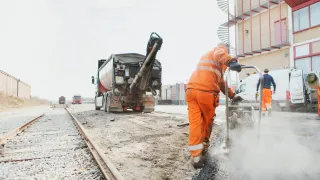Wood dust and new binding limit values – can the provision of information have an impact on exposure and working conditions? – PUUPÖLY
Objectives
According to the Government Decree on the Prevention of Work-Related Cancer Risks (1267/2019), the binding limit value for hardwood dust, or deciduous wood dust, was lowered at the beginning of 2020.
The ASA legislation was also reformed, and since the beginning of 2020, employees exposed to all types of deciduous wood dust and mixed wood dust containing deciduous wood have had to be entered in the ASA register, i.e. the Finnish register of workers exposed to carcinogens. In the past, only those exposed to oak and beech dust had to be entered in the register.
Health hazards other than cancer are also significant in the wood industry, where occupational rhinitis and asthma, among others, are prevalent. The irritant effects of wood dust can also cause, for example, prolonged colds and other common respiratory infections, which can lead to longer sickness absences.
No studies have been conducted in Finland on the work environment and exposure agents in the woodworking industry since the WOOD RISK EU project in the beginning of the millennium. According to the service reports of the Finnish Institute of Occupational Health, the exposure of employees to wood dust has been investigated mainly in large sawmills and plywood factories.
No data on wood dust exposure in the manufacturing of wood products and furniture or in small and medium-sized enterprises from the 2010s are available.
The aim of the research project is to:
- investigate the impact of provision of information on the exposure levels of wood dust and on awareness of issues related to wood dust with a survey and occupational hygiene assessments
- obtain missing information on wood dust concentrations and exposure in the manufacturing of wood products and furniture, in particular from the SME sector
- test the suitability of the Stoffenmanager® modelling tool for the assessment of wood dust exposure
- provide workplaces, OSH inspectors and wood industry organizations with guidance on exposure to wood dust and how to control it.
Results and impact
A report and articles on the results of the project, and possibly model solutions, will be prepared, a press conference will be held and information will be made available on the websites of the Finnish Institute of Occupational Health and the co-operation partners.
The results will be utilized, for example, in the services and training activities of the Finnish Institute of Occupational Health, in the training and information activities of the co-operation partners and in the inspection activities of OSH inspectors. The study provides expertise and experience in exposure modelling.
Our experts

Tuula Liukkonen
Project manager, chief specialist
Research group
Tuula Liukkonen, Reetaleena Rissanen, Tuula Räsänen, Tomi Kanerva, Tuija Silonsaari, Timo Nurkka, Kanlaya Le, Riikka Helenius, Johanna Hätinen, Pauliina Toivio
Co-operating organizations
The Centre for Occupational Safety, Finnish Forest Industries, Association of Finnish Woodworking and Furniture Industries and Regional State Administrative Agencies’ occupational safety and health responsibilities.
Funding
The Finnish Work Environment Fund, Finnish Institute of Occupational Health, Industrial union, Novart Oy, Mirka Oy



